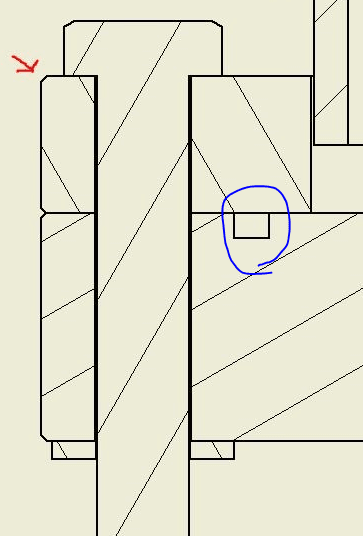Hello,
I would like to ask some questions.
My gasket groove looks like as below. It's a confined groove facing flat bottom of upper flange.

In Table 2-5.2 Effective Gasket Width, I don't find any groove types that I have. The seal is self-energized metal c-gasket.
How can I find the effective seating width for this type?
Thank you!
I would like to ask some questions.
My gasket groove looks like as below. It's a confined groove facing flat bottom of upper flange.

In Table 2-5.2 Effective Gasket Width, I don't find any groove types that I have. The seal is self-energized metal c-gasket.
How can I find the effective seating width for this type?
Thank you!
